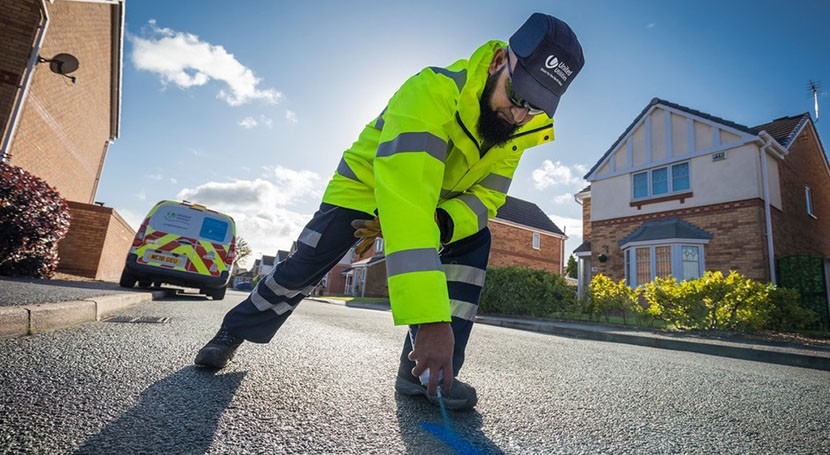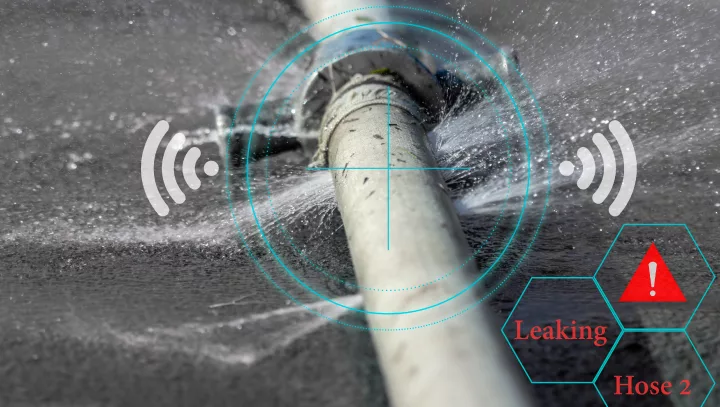Protect Against Major Concerns with Very Early Water Leak Detection and Motivate Services
Protect Against Major Concerns with Very Early Water Leak Detection and Motivate Services
Blog Article
Innovative Solutions for Early Detection of Water Leakages in Buildings and Framework
As the stability of buildings and framework is vital, the difficulty of early discovery of water leaks has stimulated ingenious remedies that guarantee to revolutionize the method we safeguard versus possible damages. From sophisticated leak detection modern technologies to the deployment of IoT sensing units for real-time monitoring, the landscape of leakage avoidance is developing swiftly. Machine discovering formulas provide a glimpse right into the future of leakage prediction, while thermal imaging presents a non-intrusive technique for determining hidden leaks. Automated water circulation evaluation systems are reshaping how leakages are identified and addressed, leading the means for a positive technique to water leak detection. Each of these options holds the crucial to ensuring the integrity and longevity of our constructed setting, prompting a shift towards a more lasting and reliable future.
Advanced Leakage Detection Technologies
Advanced leak detection technologies, equipped with advanced sensors and formulas, play a critical role in quickly recognizing and identifying water leakages in numerous settings. These innovations utilize a mix of acoustic, thermal, and electro-magnetic noticing approaches to identify leaks precisely. Acoustic sensors spot the audio of getting away water, permitting for precise localization of the leakage resource. Thermal imaging identifies temperature level modifications triggered by water leakage, giving an additional effective method for leakage recognition. Electro-magnetic sensors can identify adjustments in magnetic fields triggered by water, offering yet an additional layer of leakage discovery capability.

IoT Sensors for Real-Time Monitoring
In the realm of contemporary water leakage discovery, the integration of IoT sensors for real-time tracking stands for a crucial advancement in improving positive leakage discovery capacities. These sensors supply continual monitoring of water systems, offering real-time data on water flow rates, stress variants, and temperature level changes. By leveraging IoT innovation, these sensors can find also the tiniest abnormalities in water use patterns, allowing early recognition of possible leakages prior to they intensify into major issues.
IoT sensors transmit data to a central platform, where innovative algorithms evaluate the information and generate notifies or notifications when irregularities are discovered. This real-time tracking capability allows homeowner or facility supervisors to promptly attend to leakages, lessening water damages, reducing repair service prices, and preserving water sources.
Additionally, IoT sensing units can be integrated with structure management systems, permitting automatic reactions to discovered leaks, such as shutting down water shutoffs or activating pumps to mitigate the influence of leaks. Generally, the implementation you could check here of IoT sensors for real-time monitoring significantly improves the efficiency and performance of water leakage detection in structures and infrastructure.
Artificial Intelligence Algorithms for Leak Forecast

One key advantage of using artificial intelligence for leak forecast is its capability to continuously find out and enhance its accuracy gradually. As more information is gathered and fed into the formula, it can refine its forecasts and adapt to altering conditions, inevitably boosting the reliability of leakage detection systems.
In addition, artificial intelligence formulas can aid in determining refined indications of leakages that may go undetected by conventional surveillance methods. water leak detection. By examining intricate data sets in real-time, More Help these algorithms can give early cautions and notifies, permitting for timely treatment and precautionary upkeep to reduce possible water damage and connected prices
Utilizing Thermal Imaging for Leak Discovery
Thermal imaging technology uses an encouraging method for detecting water leaks in numerous systems and infrastructures. By using infrared radiation and temperature variations, thermal imaging video cameras can determine surprise leaks that are not quickly noticeable to the nude eye. When water escapes from pipelines or structures, it often transforms the temperature of the surrounding location, creating temperature differentials that thermal electronic cameras can capture. These temperature abnormalities are after that translated into visible pictures, highlighting the precise place of the leak.
One of the key benefits of thermal imaging for leak detection is its non-intrusive nature. On the whole, the use of thermal imaging modern technology boosts the efficiency and accuracy of water leakage detection, making it a valuable device for maintaining the honesty of buildings and frameworks.
Automated Water Flow Evaluation Solutions
How can computerized water flow evaluation systems transform the discovery and administration of leakages in different systems and frameworks? Automated water flow evaluation systems provide an aggressive technique to leakage detection by continually checking water flow prices and patterns. By developing baseline data, these systems can quickly determine deviations that may show a leak, making it possible for prompt intervention to stop extensive damages.
These systems use sophisticated formulas to click here for info analyze real-time data and provide prompt notifies when abnormalities are identified, enabling for quick action to be taken. Furthermore, automated water flow analysis systems can be incorporated with structure management systems or IoT platforms, improving total performance and enabling remote tracking capacities.
In addition, the data gathered by these systems can be utilized for predictive upkeep purposes, assisting to recognize possible powerlessness in the framework prior to leaks occur. On the whole, the application of automated water flow analysis systems can substantially improve leak detection and monitoring methods, inevitably leading to cost savings, reduced water wastage, and raised sustainability in structures and infrastructure.

Conclusion
To conclude, the combination of sophisticated leakage discovery modern technologies, IoT sensing units, artificial intelligence formulas, thermal imaging, and computerized water circulation evaluation systems supplies cutting-edge solutions for very early discovery of water leakages in structures and facilities. These innovations allow real-time tracking, prediction of leaks, and reliable detection methods to avoid water damages and waste. Carrying out these options can assist in preserving the integrity and sustainability of water systems in numerous setups.
Report this page